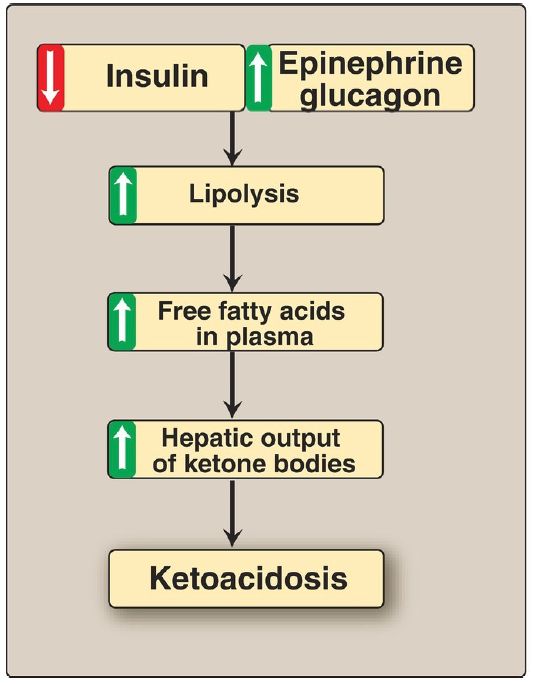


 النبات
النبات
 الحيوان
الحيوان
 الأحياء المجهرية
الأحياء المجهرية
 علم الأمراض
علم الأمراض
 التقانة الإحيائية
التقانة الإحيائية
 التقنية الحيوية المكروبية
التقنية الحيوية المكروبية
 التقنية الحياتية النانوية
التقنية الحياتية النانوية
 علم الأجنة
علم الأجنة
 الأحياء الجزيئي
الأحياء الجزيئي
 علم وظائف الأعضاء
علم وظائف الأعضاء
 الغدد
الغدد
 المضادات الحيوية
المضادات الحيوية|
Read More
Date: 30-10-2021
Date: 24-11-2021
Date: 7-10-2021
|
Excessive Ketone Body Production in Diabetes Mellitus
When the rate of formation of ketone bodies is greater than the rate of their use, their levels begin to rise in the blood (ketonemia) and, eventually, in the urine (ketonuria). This is seen most often in cases of uncontrolled type 1 diabetes mellitus (T1D), where the blood concentration of ketone bodies may reach 90 mg/dl (versus <3 mg/dl in normal individuals), and urinary excretion of ketone bodies may be as high as 5,000 mg/24 hour.
The elevation of the ketone body concentration in the blood can result in acidemia. [Note: The carboxyl group of a ketone body has a pKa of ~4. Therefore, each ketone body loses a proton (H+) as it circulates in the blood, which lowers the pH.] Also, in uncontrolled T1D, urinary loss of glucose and ketone bodies results in dehydration. Therefore, the increased number of H+ circulating in a decreased volume of plasma can cause a severe acidosis (ketoacidosis, Fig. 1) known as diabetic ketoacidosis (DKA).] A frequent symptom of DKA is a fruity odor on the breath, which results from increased production of acetone. Ketoacidosis may also be seen in cases of prolonged fasting (see p. 330) and excessive ethanol consumption .

Figure 1: Mechanism of diabetic ketoacidosis seen in uncontrolled type 1 diabetes.



|
|
|
|
"عادة ليلية" قد تكون المفتاح للوقاية من الخرف
|
|
|
|
|
|
|
ممتص الصدمات: طريقة عمله وأهميته وأبرز علامات تلفه
|
|
|
|
|
|
|
المجمع العلمي للقرآن الكريم يقيم جلسة حوارية لطلبة جامعة الكوفة
|
|
|